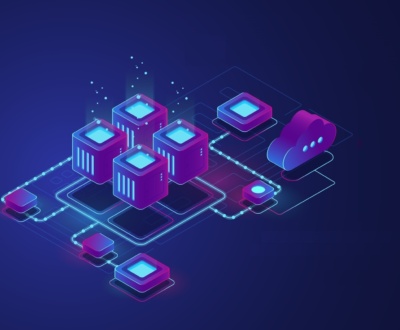Microservices Architecture
In the ever-evolving landscape of software development, choosing the right architecture for a software application is crucial. One architecture that has gained significant popularity in recent years is microservices architecture. While it offers several benefits, it may not be the best fit for every software application. In this blog post, we will explore when it’s appropriate to choose microservices architecture.
Microservices architecture is an approach of developing software as a collection of small and independent services that communicate with each other through APIs. Unlike traditional monolithic architecture, where an entire application is developed as a single, tightly integrated unit, microservices break down an application into smaller, loosely coupled services. Each service is focused on a specific business capability and can be developed, deployed, and scaled independently.
Advantages of Microservices Architecture:
1. Modularity and Scalability:
Microservices break down a monolithic application into smaller, independent services. This modularity allows for easier development, testing, deployment, and scaling of individual services based on demand.
2. Independent Development and Deployment:
Each microservice can be developed, deployed, and scaled independently. This independence accelerates the development process and allows different teams to work on different services simultaneously.
3. Technology Diversity:
Microservices support the use of different technologies, programming languages, and frameworks for each service. This flexibility allows teams to choose the most suitable tools for their specific service requirements.
4. Resilience and Fault Isolation:
Microservices enhance system resilience by isolating faults. If one microservice fails, it doesn’t necessarily affect the entire application, minimizing the risk of system-wide outages.
5. Scalability and Elasticity:
Microservices enable the independent scaling of services based on demand. This scalability is particularly beneficial for applications with varying workloads.
6. Continuous Delivery and Deployment:
Microservices support continuous delivery and deployment practices. Each service can be updated and deployed independently, facilitating faster release cycles.
7. Improved Team Autonomy:
Different teams can work on different microservices, leading to increased autonomy. This allows teams to choose their own development tools, release schedules, and development methodologies.
Disadvantages of Microservices Architecture:
1. Operational Complexity:
Microservices introduce operational complexities such as load balancing, and inter-service communication. Managing a distributed system can be more challenging.
2. Initial Development Overhead:
Breaking down an application into microservices requires upfront effort. Designing effective communication between services and managing data consistency can be complex.
3. Data Consistency:
Maintaining data consistency across microservices can be challenging. Ensuring that all services have access to accurate and up-to-date information requires careful consideration.
4. Distributed System Challenges:
Microservices introduce the challenges of dealing with a distributed system. Issues such as network latency, communication failures, and eventual consistency must be addressed.
5. Testing Challenges:
Testing a microservices-based application can be more complex than testing a monolithic application. Comprehensive testing of inter-service communication and integration is essential.
6. Increased DevOps Complexity:
Implementing and maintaining a DevOps pipeline for a microservices architecture can be more complex, requiring effective automation and monitoring.
When to Choose Microservices Architecture:
1. Scalability Requirements:
Microservices architecture excels in scenarios where scalability is a top priority. If a software application has varying workloads or if certain components require more resources than others, then in such situations, microservices allow to scale specific services independently. This agility in scaling is particularly beneficial for applications with unpredictable usage patterns.
2. Complex and Diverse Functionalities:
When a software application has diverse functionalities that can be decoupled, microservices provide a clean and efficient solution. Each microservice can be responsible for a specific business capability, making it easier to develop, test, deploy, and maintain. This modular approach simplifies the complexity of the overall system.
3. Technology Heterogeneity:
If there is a requirement of various tech stacks for various modules of an application then microservices architecture is the right choice. Microservices allow use of different technologies and frameworks for different services based on their requirements. This flexibility is advantageous when certain functionalities are better served by specific technologies. It also facilitates the use of different programming languages, databases, and tools, enabling teams to choose the best tools for the job.
4. Independent Development and Deployment:
If there are multiple development teams working on different parts of an application, microservices enable them to work independently. Each team can develop, test, and deploy their microservices without affecting other parts of the application. This autonomy leads to faster release cycles and efficient development processes.
5. Frequent Updates and Continuous Delivery:
For applications that require frequent updates and continuous delivery without impacting the whole application and no down time, microservices provide a streamlined approach. Since each microservice is a separate entity, updates can be made to specific services without impacting the entire application. This facilitates faster release cycles and allows for continuous delivery practices.
6. Resilience and Fault Isolation:
Microservices architecture enhances the resilience of an application by isolating faults. If one microservice fails, it doesn’t necessarily bring down the entire system. This isolation ensures that the failure of one service doesn’t cascade into a system-wide outage, improving overall system reliability.
Considerations Before Choosing Microservices:
While microservices architecture offers numerous advantages, it’s essential to consider the complexity it introduces. Here are some factors to consider before deciding to adopt microservices:
1. Operational Overhead:
Microservices introduce operational complexities such as load balancing, and inter-service communication. Consider whether the team is equipped to handle these challenges.
2. Initial Development Overhead:
Breaking down an application into microservices requires upfront effort. Consider whether the benefits in terms of scalability and flexibility justify the initial development overhead.
3. Team Expertise:
Ensure that the development team has the required expertise for developing and maintaining a microservices-based architecture. Training may be necessary to adapt to the new paradigm.
4. Data Consistency and Integration:
Managing data consistency and integration between microservices can be challenging. Consider how the application’s data will be distributed and shared among services.
Conclusion:
In conclusion, microservices architecture is a powerful solution for certain types of applications, particularly those with scalability, diversity, and independence requirements. However, it’s crucial to weigh the benefits against the challenges and consider the specific needs of the software application before making a decision.
There is no one-size-fits-all solution in software architecture, and the choice between monolithic and microservices architecture should align with the goals and characteristics of the application.
It’s important to note that the decision to adopt microservices architecture should be based on the specific needs and characteristics of the application being developed. The advantages can provide significant benefits in certain scenarios, but the challenges must be carefully considered and addressed.
About us
We excel in a wide spectrum of services, including web development, business solutions, automation, e-commerce solutions, mobile apps, and DevOps, providing comprehensive expertise to meet all your technological needs
More from our blog
See all postsRecent Posts
- Migrating Legacy Applications to the Cloud: A Comprehensive Guide May 24, 2024
- Microservices Design Pattern – Circuit Breaker March 13, 2024
- Microservices Design Pattern – Service Registry and Discovery March 1, 2024










